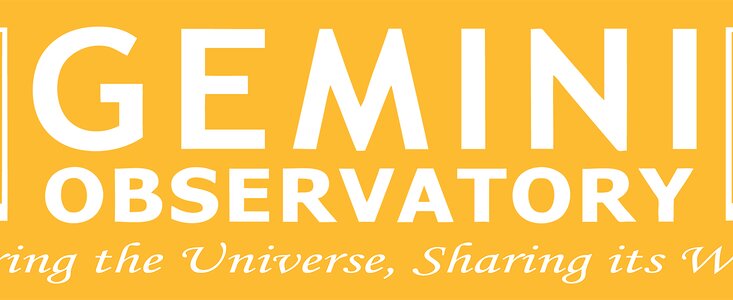Gemini's Public Information Officer Opens the Public Information and Outreach Office
3 August 1998
"Gemini Observatory Update", to appear in Hilo's Tribune Herald, Friday August 7th.
Archeologists estimate that somewhere between 1500-2000 years ago, the first Polynesians arrived in Hawai'i. Few would argue that the stars were an important guide as these early explorers migrated across the vast Pacific. While the first Hawaiians saw essentially the same sky we see today, our understanding of the universe has changed remarkably since then.
We can only guess what the first Hawaiians thought about the nature of our universe. However, I think it's safe to say that most early Hawaiians knew more naked-eye astronomy than most folks today. As devoted and skilled sky watchers, the Polynesians and Hawaiians were among the most proficient early astronomers on our planet. Today, this legacy of skywatching continues atop Mauna Kea as a revolutionary new observatory called Gemini keeps the spirit of exploration alive and well in Hawai'i.
The Gemini 8-meter Observatory Project is part of an international effort to create two identical large telescopes - one in Hawai'i to study the sky lying over the northern hemisphere, and one in Chile to observe the southern sky. Together, these telescopes will help to propel our understanding of the universe to new heights.
However, lofty goals like these often start from humble beginnings. Currently, the Gemini staff can be found in temporary offices located in downtown Hilo where computer boxes serve as office walls and staff have become very close - literally! A few miles away, local contractors and technicians are scrambling to ready Gemini's new Northern Operations Center at Hilo's University Park. When fully occupied, as many as 70 staff will live and work in Hilo, supporting each of these 100 million-dollar state-of-the-art observatories on each side of the globe. This facility will also serve as the primary observatory headquarters for at least the next 2 years.
Outside the new Hilo headquarters, seven flags display the colors of the partner countries that have contributed to make this project a reality. The United States, through the National Science Foundation, is contributing about 50% of the cost of this project, while the flags of Canada, the United Kingdom, Argentina, Brazil, Chile and Australia also fly high over the new Hilo facility.
Upon entering the new Hilo facility, a large window in the front lobby reveals the brains of Gemini - "mission control" where the telescope atop Mauna Kea (and even the scope in Chile) can be controlled. Director Dr. Matt Mountain maintains that, "Remote observing is the most efficient way to run a large telescope like Gemini. With a minimum staff on the summit and scientific staff in Hilo, people work much smarter and we can make much better use of the facility."
Because Gemini uses a relatively thin mirror, it requires a special support structure to adjust for sagging of the mirror due to its own weight (about 25 US Tons). As of this writing, the support structure or "mirror-cell" is awaiting passage through the Panama Canal and should be mated with the mirror in the next few months. Then a thin coat of reflective metal will be applied to the mirror's surface and this collection of glass, metal and electronics will be transformed into one of the world's most powerful telescopes.
Late this year it is anticipated that the Gemini telescope atop Mauna Kea will celebrate "first-light" when the first image taken through a UH camera glows on a computer monitor down in Hilo. Following this event, systems will be further tested and refined, instruments will be added and scientists will start using the telescope to do what Gemini will do best - explore the depths of our universe.
"Once scientific work begins at Gemini in late 1999 we should immediately start to realize some of the scientific goals of the project," said Gemini astronomer Dr. Phil Puxley. These goals include uncovering evidence for new planetary systems beyond our solar system, providing a better understanding of the evolution of stars and galaxies, and even observing the most distant galaxies ever seen to learn how our universe began and might ultimately end.
Finding answers to big questions is what makes us human and undoubtedly what led the first Polynesians to Hawai'i. The staff and scientists of the Gemini project are proud to be part of this exciting Hawaiian heritage of exploration and to be an active part of the Big Island community.
With the establishment of the Gemini Public Information and Outreach Office, local residents, educators and students are invited to contact me if you have questions about our facility, or astronomy in general. I can be reached at 933-7110, or at 974-2510 once we move to our new headquarters by the second week in August. I can also be contacted by e-mail at pmichaud@gemini.edu.


